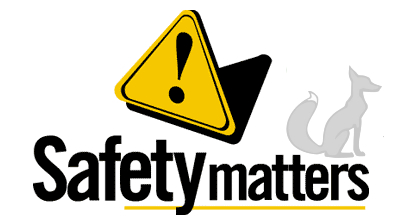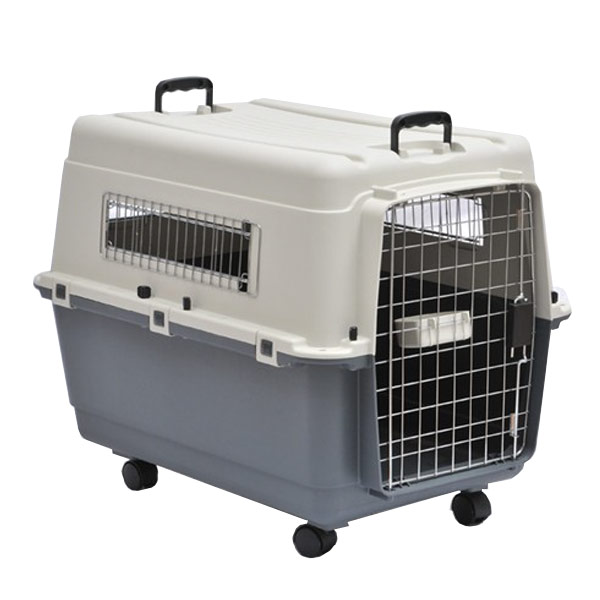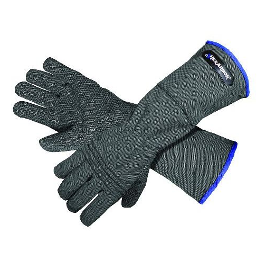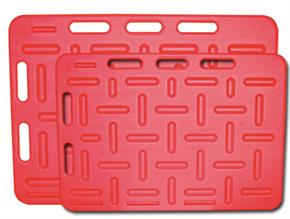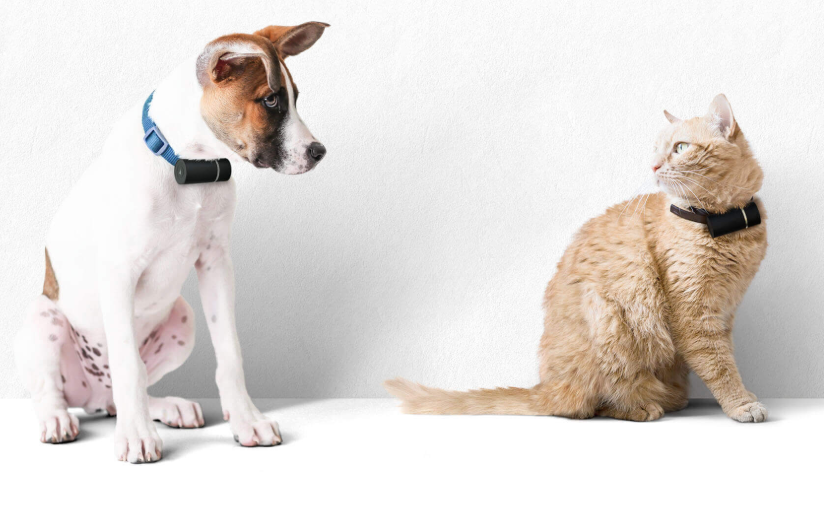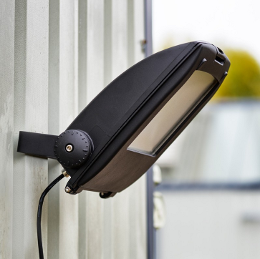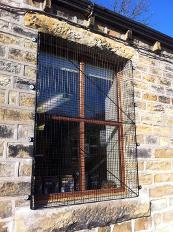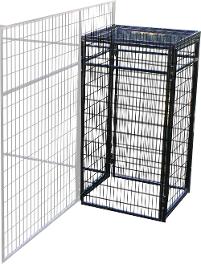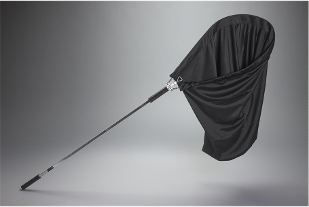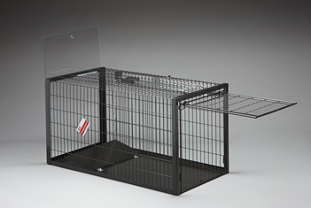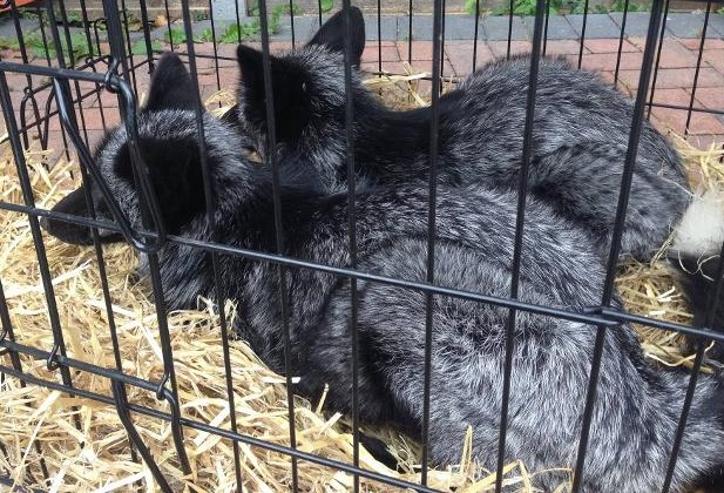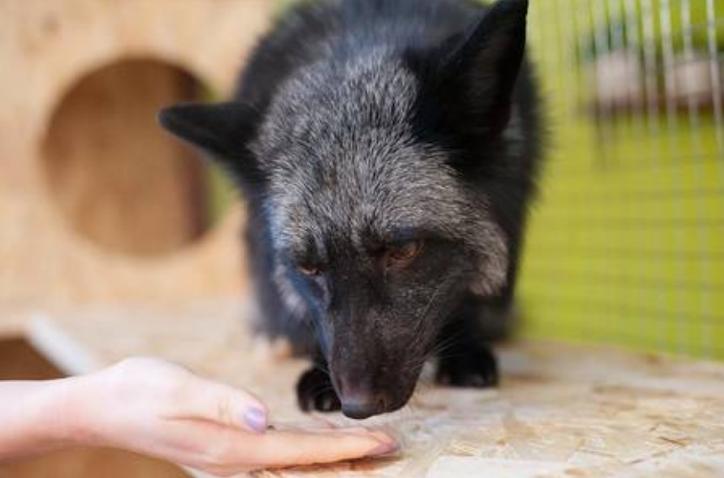
Health & Safety Assessment
Health and safety regulations are only applicable to businesses, no matter how small they are. However, under the Animal Welfare Act 2006, private keepers have a "Duty of Care" towards the health and safety of the animals within their care, as well as for those who come into contact with them.
Adopting the use of Health & Safety procedures is not without benefit for private keepers, as ensuring a safe living environment is provided and ensuring adequate precautions are taken to reduce risks are part and parcel of responsible animal keeping. Good practice in health and safety makes sound sense and promotes responsible exotic pet ownership.
The Five Steps of Risk Assessment:
Risk assessments are an important tool used by animal keepers to ensure they provide the highest health and safety standards, aiding to ensure no reasonably avoidable harm comes to the animals within their care or to those who have contact with them.
It is considered good practice to ensure the risks involved with keeping a fox are considered, assessed and that action is taken to minimize any potential risks.
To conduct a risk assessment you will need to:
- Identify potential hazards within the environment or during activities - including physical, mental, chemical and biological hazards.
- Identify who could potentially be harmed, and how.
- Assess the likelihood and severity of risks, and take action to reduce or remove those risks.
- Keep a record of any findings.
- Monitor and review your risk assessment periodically, or in the event of an accident.
Types of Hazard:
- Chemical Hazards - Hazards as a result of substances deemed hazardous to health that keepers or animals may be exposed to, including (but not limited to) substances that are toxic, corrosive, flammable, harmful or irritant.
- Biological Hazards - Hazards as a result of contact or exposure to biological material within the environment, (such as allergies as a result of exposure to dander, urine and/or faeces or disease as a result of contact with the environment).
- Physical Hazards - Hazards as a result of activities keepers or animals may undertake (such as injury as a result of faulty enrichment, trips or falls from unsafe surfaces, or cuts and grazes as a result of undertaking activities).
- Environmental Hazards - Hazards resulting from environmental sources such as; dust, noise, extreme temperature, fire and extreme weather (including national and local government contingency plans for emergency events).
- Equipment and Electrical Hazards - Hazards to keepers and animals as a result of unsafe or inadequate equipment. Steps must be taken to prevent electrical hazards, such as those presented by exposed electricity cables.
- Animal Hazards - Hazards as result of direct or indirect contact with live or dead animals, such as; bites, scratches and zoonotic diseases (specifically during pregnancy). Seek medical/veterinary advice and attention if serious bites and scratches occur, or if there is a risk of zoonotic infection.
- Competency - Hazards as a result of a lack of knowledge and experience. A certain level of knowledge and experience is required to keep exotic animals safely, as well as to carry out the tasks involved in keeping them. Exotic pet keeping is a specialist hobby, much more is involved and needed than what you would expect for dogs and cats.
- Human Error - Most accidents occur because of human error, such as; not following basic rules and training principles, not using adequate protective equipment, inappropriate dress and/or equipment, not maintaining equipment and not fully understanding the needs or behaviour of the animal.
- Organisational Hazards - Hazards as a result of personal issues influencing management ability, such as; stress, poor time management, poor communication, reduction of income, relocation, relationship problems, disagreements with neighbours/landlords (such as noise or hygiene complaints).
Specalist Equipment & PPE
When bringing a fox into a new environment for the first time keepers need all the same things someone might need when bringing home a new cat or dog, such as; bowls, collar, harness, treats, bedding, toys, etc. But the need for specialist equipment and PPE comes part and parcel of responsible exotic pet keeping and keeping foxes is not like keeping cats or dogs, no matter how much their behaviour can be compared.
When choosing suitable equipment and PPE, keepers must remember to give consideration to the size requirements of any animal or operator it may be intended for or used by. They must ensure equipment or PPE is fit for purpose, appropriate for the situation in which it will be used and in conformity with all required safety standards. Consideration should also be given to the suitable cleaning, maintenance and storage of such equipment.
To keep such exotic pets responsibly and to the highest standards keepers MUST consider what extra specialist equipment they may need, especially equipment that may be needed during any potential emergency situation (including fire fighting equipment such as fire blankets and fire extinguishers).
Suggested Specialist Equipment:
- A Secure Travel Crate
Transporting a fox in a vehicle and visiting the vet in the event of an emergency will both require the use of a secure travel crate in order to transport a fox safely. Foxes are great escape artists, they can squeeze through gaps much smaller than would appear (assume anything they can get their head through is big enough for them to get through). They are also very destructive when they want to be, those sharp teeth of their's can quickly and easily chew through most materials. Crate training (for travel) should begin as soon as possible, in order to ensure the risks of trigger stacking are reduced, should a fox need to be crated in the event of an emergency or vet visit, further down the line.
"This airline approved Barkshire Dog Carrier is strong, sturdy and durable to meet your pet’s travelling requirements. Manufactured from heavy duty plastic, it features air vents to promote a healthy air flow and a safety door as well as a water/food bowl. You can rest assured that your pet will feel safe and secure and still have great visibility in this excellent carrier"
- Animal Handling Gloves
While foxes can be trained to tolerate handling, they are much more like cats than dogs and contact is most often on their terms, (with the people they know and have built trust with). Their teeth and nails are sharp and even small cubs can easily puncture and scratch skin. Handling and bite inhibition training must begin when they are very young and keepers must remain persistent and consistent with training throughout adolescence, animal handling gloves and protective sleeves are the easiest and safest way to ensure success during the more challenging times. Foxes don't tolerate handling sessions for long, but it is essential for reducing stress responses that they are taught to. When sick or injured, when in strange new situations or during emergencies, even the tamest of foxes can become unpredictable and much less tolerant. In these circumstances having at least one pair of reliable gloves available can be an invaluable asset, ensuring keeper safety and the safety of the fox, through swift and safe handling.
"If you work within the zoology or veterinary field let me introduce you to the ultimate animal handling safety gloves on the market. The HexArmor Hercules R8E 3180, also known as the Venom Defender Animal Handling Gloves have been recognised by the BIAZA, the British and Irish Association of Zoos and Aquariums as being ‘best practice’ for animal handling"
Hex Armor - The Ultimate Animal Handling Gloves, Safety Gloves, UK
- Soft Muzzle
It is important keepers train their foxes to tolerate a muzzle. Training foxes to tolerate wearing a muzzle for short periods can be a valuable asset come vet visits or during emergencies. Muzzle training helps remove preventable trigger stacking should a muzzle ever need to be used - reducing fear for the fox and reducing stress for keepers. The goal of training a fox to tolerate wearing a muzzle is to teach them that despite the inconvenience, it is a positive and ultimately rewarding experience. Muzzle training takes time, patience and consistency but is a worthy investment. Training a fox to wear a muzzle could take anywhere between several weeks to several months, depending on the fox and the situation.
"Designed for control and safety of thin, long-snouted breeds, such as Shelties, Collies and Greyhounds... The Popular temporary-use Quick Muzzle® reduces the risk of dog bites. Snug secure fit for safe, professional care of hard-to-handle animals. Durable quick-release plastic buckle for fast, efficient muzzle closure"
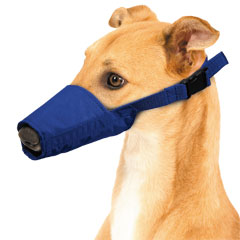
- Herding Boards
Herding a fox into a cage or enclosed space is the easiest option for containing an animal that is avoiding capture. Herding boards are the best product for the job, being lightweight, durable and designed for the purpose of moving animals (sheets spread between two people can also be used, especially if covering large spaces outdoors). When herding animals, it is helpful to have an understanding of "flight distances" (the distance an animal is comfortable maintaining in your presence), and "balance points" (usually in line with the shoulder area, this is the point that influences where an animal can move according to the "pressure" applied to it ). There is no average distance for flight zones in animals, each flight zone will depend on how "tame" the animal is and how calm or excited they are.
"Very robust Pig Boards for herding your pigs effectively. Made from lightweight plastic board and available in two sizes available 94cm x 76cm and 126cm x 76cm"
- GPS Tracker
Foxes are great escape artists that can be notoriously hard to capture. For this reason it is wise for keepers to take advantage of new technologies and invest in a GPS tracking collar. There are many different options now available on the market, the POD Tracker has been used by other fox keepers with great success. In order to use such a device with foxes, it is important they are taught to tolerate handling and people touching their collar in advance. Such training is necessary to ensure keepers are able to attach and remove the device for charging.
"Never lose your pet.
Pod 3 is a small tracking device using multiple technologies to help you find and protect your furry friends, anywhere in the world with cell reception."
- Safety/Security Light
When designing an enclosure, sufficient lighting must be included into the design. Outdoor enclosures require enough lighting for keepers to be able to see the enclosure and the fox clearly. Wires also need to be protected and kept well away from reach. The lighting chosen needs to be weatherproof and durable, and consideration needs to be given to both lifespan and running costs. Sufficient lighting is essential for safety during winter months or in the event of an emergency outside of daylight hours. Keepers also need to consider torches and portable floodlights for use during emergencies (for checking small enclosed spaces, those areas away from power sources or for use during power shortages).
"Whether you're safeguarding a home or a business premises, security lighting is one of the more effective measures you'll take against unwanted visitors...As well as good security lighting, consider installing alarms, full security systems, CCTV, perimeter fencing and warning signs. Ensure your locks are sturdy"
- Secure Enclosure
A minimum of 150 square foot per fox is recommended when considering enclosure design for foxes and each fox kept will need their own 150 square foot of space, with an additional 50 sq ft of space for each additional fox. A larger area than the minimum space necessary is most ideal. Enclosures should be located in a protected area away from bad weather, strong winds and direct sunlight, be a minimum of 6 feet in height, have a secure base and roof and be made from a minimum of min. 50mm x 50mm, 3-4mm galvanized welded steel mesh panels, (with adequate drainage and lighting). Foxes are exceptional diggers, so if an enclosure is exceptionally large and does not have a solid concrete base (preferred), the fences will need to be sunk at least 3 foot into the ground and the ground underwired at least 3 foot across (example here). A more secure option, is to lay a wire base under the soil across the entire enclosure.
"We supply our panels to Zoos all over the country Including BIAZA members.
The system is incredibly versatile, every panel is drilled through the face and side so any panel can be either a corner or side panel. This allows the cages to be taken down and reassembled in a different shape or format"
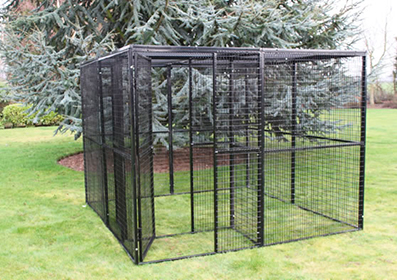
- Window Guards
If a fox has access to indoors, it is important keepers consider security and safety around windows and doors. Rooms need to be aerated and cooled without the risk of the fox escaping. There are now several products on the market designed for cats and dogs, however, these aren't generally suitable for foxes (a min. of 12 gauge wire is recommended for containing foxes). Window guards like those below, are one option, with some keepers using window boxes instead; as Vraska shows, here.
"We manufacture wire mesh screens and grilles for doors and windows; preventing unwanted people, debris, birds or small animals accessing your premises. The grilles allow windows and doors to open whilst being easy to remove for cleaning and maintenance"
- Security Overhang and Perimeter Fencing
Should a fox escape it's enclosure it is essential that the perimeter fencing of has a suitable "overhang". The overhang needs to be around 2 foot in width and set at a 45 degree angle (cranked fence topper), in order to prevent escape, example here. Foxes are well adapted to jumping and climbing and can quickly and easily clear a 6 foot fence, so fencing must be a minimum of 6 feet in height (from ground level), be solid, secure and preferably be sunken 3 feet into the ground to prevent foxes from digging out.
"Inspired design provides your pet with access to a safe territory. Our patented cat containment systems are the only cat enclosures and cat fencetop barriers which are optimised for the most agile breeds of cats such as bengals and orientals... Our award winning components provide the peace of mind that you have been longing for"
- Double Security Doors
In a Fox Owner Survey, conducted in 2015, 90% of owners either had an outdoor enclosure or were planning on providing an outdoor enclosure in future. In a survey conducted in 2016, found similar results with 83% of owners providing (or planning to provide) an outdoor enclosure. An important part of enclosure safety is a double door secure entry system, the provision of which greatly reduces the risk of potential escape. It also provides a secure, enclosed space to herd a fox into should there be a need to restrain them.
"K9 store double safety door... allows you to walk into your kennel and shut the safety door behind you before opening the main door... if you would like to add one more element of security for you and your pet the... double safety door is the add on for you"
Emergency Capture & Restraint Equipment:
The capture and restraint tools listed below are for use in EMERGENCY SITUATIONS ONLY and can be dangerous to a fox if used incorrectly. On top of this, having to restrain a fox in such a manner will ultimately destroy any trust built (and rightly so), but when there is risk of injury or death, a damaged relationship is the least harmful option.
It is also essential that such tools are only used by those with KNOWLEDGE IN THEIR SAFE USE. There are courses and professional hire services now available in the capture & restraint of wildlife, for those wishing to gain such skills.
- Catch Net
While its possible to teach foxes recall, as well as to crate train them to go into a crate on command, they are very timid creatures and they do not tolerate new situations well. This means they may not always behave in a predictable manner and can be notoriously difficult to catch if they escape. During these times a catch net can be invaluable, allowing keepers to effectively capture a fox without risk of harming themselves or the animal. As stated above, foxes have a natural "flight distance" and while in "flight mode" a fox will take a step back for every step forward you make, ensuring the "flight distance" is maintained. It is for this reason catch nets can be very useful, as they can be used to reduce the flight distance and allow for the opportunity to catch a fox in a controlled manner. Only solid, non-stretch material should be considered for use with foxes, as other types of net can easily entangle a fox.
"Catch Net™ for Small Dogs - A safe way to catch small to medium sized dogs and wildlife, the fabric net is attached to a closure mechanism and fixed pole... Our net is strong, lightweight and easy to manipulate. The fabric does not stretch, animals don't become entangled and it can be replaced quite easily. When not in use the catch net is easily stowed in a vehicle, clinic or ward."
Alternatively, keepers may use a cat grabber or catch-pole, providing them with an alternative means to safely capture and restrain an uncooperative fox. A catch-pole is a long stick with a cabled loop on one end. The loop is placed over the animal's head and tightened to hold the animal. It is possible for foxes to accidentally suffocate if the loop is only placed around their necks alone, so is best to place the loop over the head and over one of the front legs. Commercial catch-poles often lock once you've pulled the cable tight and also have a quick-release for safety. There are also options available that swivel, allowing a fractious fox to twist without the risk ofbeing suffocated.
When used correctly, such tools can be very effective, especially if the fox is in a location that is difficult to reach (such as under a shed). However, knowledge in their safe use is essential, as inappropriate or unskilled use could potentially result in injury or death to the animal.
- Fox Trap
Foxes are notoriously difficult to catch and if all other methods of capture fail, the use of a humane fox trap may be necessary in order to return it to safety. If a fox trap is being used to catch a a missing pet, permission (preferably written), from the landowner to use the trap on their land, must be sought and the trap checked every 6 hours (at least once in 24 hours under UK law). It is important to note that if the police or a rescue organisation capture a lost fox, it is possible it may not be returned. Under the Animal Welfare Act 2006, it is a criminal offence to deliberately release or abandon any domestic or captive animal and can result in a fine or even a ban, depending on the circumstances. Reporting lost exotic pets is important to show the animal was not deliberately released and to show it has not been abandoned. Legalities aside, should a fox escape, there is a duty to capture it and return it to safety.
"One of our range of high quality traps designed in consultation with industry experts for the safe capture and temporary containment of foxes and cubs. Fox tamper proof, Strong and durable, Self-activating trap"
Enclosure Hygiene:
The places animals are kept (such as enclosures, kennels and crates) and the toys and enrichment devices they use can become extremely dirty and full of pathogens very quickly. Foxes also have a very strong, penetrating and greasy scent that can be difficult to remove, as well as using both urine and faeces to mark territory.
Good daily cleaning habits are necessary when keeping foxes, in order to reduce the risk of disease and zoonoses. Keepers should ensure they adhere to a daily cleaning schedule as well as ensuring the enclosure is sanitized once a week by giving it a "deep clean", making sure weeds, decaying matter, offensive smells and potential pathogen loads are kept to a minimum.
Hygiene and maintenance equipment needed when keeping foxes can include:
A steam cleaner can help to sanitize the environment by removing dirt and allergens without the use of heavy chemicals. The most reliable and effective steam cleaners come with attachment options for sterilisation, can be used both inside and outside of the home and come certified by the British Allergy Association.
- Power Washer
The use of a power washer (a machine that delivers hot water at high pressure) once a week on enclosure meshing, kennels, walls, concrete flooring and enrichment devices, will help ensure a foxes environment remains sufficiently clean. As with most machinery, there is the option to hire the equipment as needed to reduce costs, though the cost of purchasing such a machine is cheaper than any veterinary costs keepers may potentially encounter as a result of a nasty bug that is proving difficult to eradicate.
"DIY high-pressure cleaner with superb versatility & top quality performance, reliability and ease of use... Can also be used for degreasing too. If you've never tried hot water pressure cleaning before – there is a massive difference between the performance of hot water cleaning compared to cold. It's like cleaning your hands in hot water compared to cold.. hot cleans so much better!"
Lavor Advanced 1108 Hot Water Pressure Washer, Equip 2 Clean
"Steam is a very important resource for deep cleaning every surface. Thanks to the temperature of steam in pressure, Vaporetto neutralises dust mites, germs and bacteria without the use of chemicals, preventing the onset of allergies in a natural way and with no impact on the environment... evidenced by the seal of approval of the British Allergy Foundation"
- Dog Poo Composter
Disposal of animal waste is a complex and under discussed issue. Under UK law, animal waste is considered an Offensive Waste that must be disposed of separately from household waste, using a registered carrier of controlled waste, holding a current Waste Carrier Licence, in accordance with section 2 of the Control of Pollution (Amendment Act) 1989. This is all well and fine when you have a dog you can walk several times daily, with bins specially provided for your full doggy bags, but with exotic pets, daily walks aren't so straight forward and excrement can mount up quickly. So what do keepers do with their poop? In animal establishments, animal waste is disposed of through building "midden's" (large compost heaps made from animal bedding and waste), similar is achieved by private keepers by building smaller compost heaps or with the use of tools such as a dog poo composter.
- Cleaning & Disinfectants
When cleaning fox enclosures, enrichment products and floors (where foxes have access), a suitable broad-spectrum cleaner that is safe for use in such animals is needed. Veterinary grade products are most reliable for such circumstances. Keepers must ensure the manufacturers instructions are followed, that animals are removed from the area while cleaning is in progress, that all residue is removed and that the area is dry before the animal comes back into contact with the environment. Keepers also need to consider hand hygiene, such as the use of veterinary grade hand hygiene products or other products designed for regular use after contact with animals (and animal matter).
"High Level Lavender Scented Disinfectant Cleaner has been expertly formulated... allowing more efficient removal of surface contaminants. It can be used for all reception areas, surfaces and equipment in veterinary surgeries and for all disinfection applications in kennels, catteries and other animal habitats. The unique formula is Bactericidal, Fungicidal, Virucidal and Sporicidal"
Anigene HLD4V High Level Lavender Scented Disinfectant Cleaner
"Dispose of your dog waste safely and easily! A quick, easy and efficient method for recycling dog waste - Nature's perfect answer! The worms will digest the waste and turn it into worm castings.
The dog poo wormery is a proven way to deal with dog waste, has virtually no smells and will prove invaluable to you. Replaces the poly bag pick-up method which contributes to landfill sites and environmental pollution"
On the subject of poo, a "manure scoop" or "poo picker" allows keepers to dispose of animal waste in a safe and hygienic manner (sanitation of the scoop after use is also needed).
"This pooper scooper is designed so that there is no need to bend down to pick up animal waste. Ideal for use in veterinary practices, kennels, boarding or grooming parlours... The scoop has both rake and flat sides allowing options for use in long grass, kennels, waiting room, sand or patio surfaces... can be safely stored... and steeped in disinfectant or hosed off to clean.
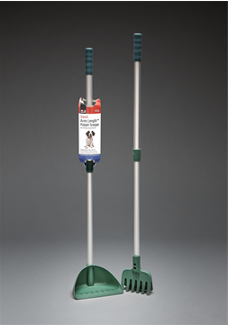
Capture & Restraint
"Puppy" training a fox from a young age allows keepers to be able to safely and easily handle and restrain a fox during normal everyday circumstances. However, there are times when capturing a fox might not be so straight forward, especially if they are roaming, sick or injured. It is in these emergency situations that the specialist equipment and PPE mentioned above, may become necessary.
Experience is advantageous for capturing a reluctant fox, as it can be a difficult and hazardous task. If you need to capture a lost pet fox, seek advice from organisations that can provide assistance in locating and retrieving lost exotic pets in advance, such as Black Foxes UK or Animal Search UK.
"In some situations, particularly where an animal can be easily targeted, the use of darting techniques may greatly decrease the stress of capture when compared with physical capture combined with hand-injection. In using darting techniques, the following points must be remembered:
The size of needle, volume and viscosity of the fluid and the amount of power used to project the dart should be appropriate to the size of the muscle mass and thickness of the skin. The use of inappropriate equipment and materials can cause serious damage to the animal. Darting should only be undertaken by experienced personnel holding the requisite UK firearms licence"
Catching & Handling of Vulpes Vulpes (Red Fox) - Wild Pro, Twycross Zoo
It is important to remember that a fearful fox may try to resist capture, handling and restraint (even if they usually tolerate such circumstances well), during which time, they are capable of inflicting injury to themselves and the handlers involved, so safety must be the primary consideration.
Animal Welfare Considerations:
Evidence from behavioural and physiological studies indicates that restraint and handling are significant stressors for animals such as foxes, which can present a great risk of injury, especially during emergency situations.
Handling and restraint techniques must therefore aim to minimise stress on the animal and maximise the safety of the handler. Consider the technique to be used and assess it's suitability for the situation. The use of an inappropriate technique increases the risk of injury of both the animal and the handler and could potentially prove fatal for the fox.
Never attempt to catch a fox by the tail, doing so can cause serious and permanent damage.
If you find a fox is trapped, has been injured prior to capture, or is injured during any restraint and handling procedures while capturing it, ensure you contact your vet for advice IMMEDIATELY. Being captured can be an extremely stressful process for animals, so also watch out for signs of shock and seek veterinary guidance should a fox show any behaviour or symptoms that concern you.
Before returning an escaped pet home, ensure the enclosure and it's perimeter have been secured. Also make sure they receive veterinary grade preventative parasite treatment and that they are given a thorough general health check. If there are other animals sharing the home/enclosure, it is best practice to quarantine the escaped animal for a few days, just in case they have picked something up on their travels (such as mange, ticks, fleas, ear mites, worms, etc).
Human Safety Considerations:
Cornered foxes are capable of inflicting painful injury through bites and scratches. If you find yourself in the position of having to capture a reluctant fox, ensure you are wearing suitable clothing:
- Thick trousers.
- Steel toe capped boots.
- A thick long sleeved top.
- Wrist guards.
- Animal handling gloves.
It is also wise to keep a soft broom to hand, which allows you to keep cornered or aggressive animals at arms length. A broom is also a handy tool help you herd a fox.
When keeping or working with animals, it is important to ensure your vaccinations are up-to-date and that you have a human first aid kit, to ensure you can deal promptly with any potential bites and scratches.
Handling animals comes with the risk of zoonoses (diseases that can be transmitted between humans and animals), be aware of any signs and symptoms for common zoonotic infections and where necessary, make sure you use any appropriate PPE to protect against disease transmission. Before handling sick animals, make sure you familiarize yourself with the basic principles of infection control.
Animal bites are considered "tetanus-prone wounds" and require preventative treatment. If you are badly bitten or scratched during the capture and restraint of a fox call 111 for advice and seek an emergency appointment with your GP (tetanus immunoglobin (TIG) treatment will be given to provide immediate, short-term protection against tetanus. Treatment is recommended for "tetanus-prone wounds" even if your tetanus vaccination is up-to-date). If the injury is severe, call 999 and go to A&E.
Dealing with Bites and Scratches:
- Let the wound slightly bleed under running water.
- Gently scrub the area with antiseptic soap for several minutes.
- Wash the wound until all visible dirt and debris are gone.
- Apply gauze and firm pressure to control any bleeding.
- Apply a plaster or dressing if the wound is superficial and not bleeding.
- Notify your GP and book an emergency appointment if necessary.
Locating an Animal:
Should a fox ever escape, the safety and security that is provided with a GPS tracking device soon becomes apparent. Such devices notify keepers that their pet has crossed the designated boundary and at the touch of a button it can provide them with their current location, saving a lot of time and worry.
If the fox doesn't wear a GPS tracking device, there are several things keepers can do to locate a lost fox:
- Co-ordinate searches among family and friends within the local area, (locating a fox can be safer and more effective at dawn (around 4-5 am), when the light is just breaking and it is quieter).
- Go door-to-door altering neighbours and locals, providing them with their contact details and asking them to check under/in sheds etc. and to keep any small pets (such as chickens, rabbits and guinea pigs) secure.
- Put up flyers locally with information and contact details.
- Alert the local police, animal warden, vets and wildlife centers.
- Contact organisations like Black Foxes UK, Animal Search UK, the National Pet Register and Dog Lost, who can alert a wider audience and provide you with information on potential sightings.
- Contact the local radio and media.
- Look for tracks and signs of a fox being in the area and leave traps lined with familiar scents and smells.
- Once you have located and returned a lost pet, don't forget to update all those involved in assisting by notifying them that the animal is back and safe.
Before Attempting to Approach and Capture:
- Make sure there is sufficient lighting to see clearly.
- Remember not to approach a fox near busy roads.
- Only attempt capture if you have the necessary equipment and container.
- Make sure you are wearing the correct clothing and PPE.
- Remove any other animals, unwanted people or other hazards from the area.
- Ensure the transport crate is suitable, open and ready.
- Ensure all escape routes are blocked or covered.
- Approach the fox quietly, slowly and deliberately.
- Do not make any sudden movements or loud noises.
- Avoid direct eye contact but maintain safe visual contact.
- Remain quiet, speak in calm, quiet, soft tones if necessary.
- Use the least amount of coercion and restraint necessary.
- If the animal is trapped, contact a vet for advice prior to attempting capture.
Approaching an Animal:
A fox in a strange and unusual situation is going to be highly stressed and likely to bite. Foxes have sharp teeth that can deliver a painful punch, even through leather gloves. Make sure there are a minimum of two people assisting and that you have a plan of action prepared in advance. The best way to capture of fox is to herd it with boards, sheets or brooms (or to lure it with food, where possible) into a travel crate placed within an enclosed space (using a broom to close the door behind them). In some circumstances it may be safer and easier to use a net or catch-pole.
Capturing a Fox:
Below you will find a description of four different types of technique used to capture reluctant foxes:
1) Box Capture
- Min. of 3 people required, though 6 is preferable.
- Crate is placed in suitable location behind/near the fox.
- Two (or 4) people with herding boards (or a sheet each between two of them) stand either side of the crate creating a funnel with their boards.
- The the other person (or other two people) can then herd the fox towards the crate, funneling them down towards the crate.
- Foxes jump, so you may wish to create a "sheet roof" between those holding the boards by the crate.
- Once in the crate, quickly block the exit and close the door behind them.
- Ensure the door is locked firmly closed.
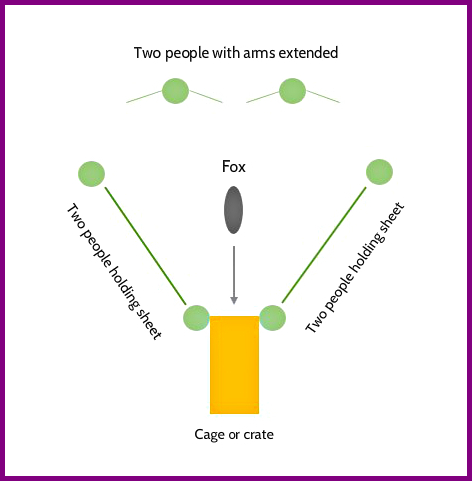
2) Net capture
- Min. of 2 people required.
- One person stands with a net near the fox’s anticipated escape route.
- Other person herds the fox towards the handler with net.
- As the fox approaches, bring the net down rapidly into the path of the fox and close it to ground/against a wall.
- The other person can then pin the fox’s head to the ground with the use of a gloved hand or soft broom.
- The fox can then be scruffed and crated.
- Once in the crate, close the door (releasing fox & removing the net at the last moment).
Foxes have an amazing ability to defend themselves against capture and will readily use their sharp teeth and claws in defense. Receiving bites and scratches can often be an inevitable part of the capture, restraint and handling of fractious animals, even for skilled animal handlers, so it is important to be mentally and physically prepared to withstand a certain amount of biting, scratching and struggling.
The use of specialist animal handling gloves (or heavy leather gloves) is recommended for handling fractious foxes. Those gloves available with Kevlar linings and outer shells offer the best protection, often being thinner and allowing for greater dexterity, but at a pinch, heavy leather work gloves will suffice.
Bear in mind that that even specialist animal handling gloves can be pierced. Wearing gloves will also reduce the handler's dexterity and their ability to securely scruff an animal (specialist sleeves can protect arms while allowing the removal of gloves for secure restraint).
Tips for Handling Foxes:
- Make sure you are wearing suitable clothing and PPE.
- Make sure you are confident in your ability to perform the task.
- Be calm and quiet, don't make any sudden movements or loud noises.
- Always use the least amount of restraint necessary.
- "Scruffing" is the best way to restrain an animal for movement or examination.
- Never attempt to restrain a fox by it's tail, as doing so can do serious and permanent damage.
- Muzzle foxes receiving veterinary treatment in order to prevent bites.
- Fractious foxes that require treatment and medication can be transferred to a "crush cage".
3) Catch-pole capture
- Min. of 1 person required, but 2 people preferred.
- One person (trained in catch-pole use) secures the noose around the fox's head.
- The fox can then be safely maneuvered into a safe rescue position.
- Place a towel over the fox's head to reduce arousal and risks of bites/scratches.
- The fox can now be safely scuffed at the neck to safely move it.
- Support/scruff the fox's rump and place the animal into a secure crate.
- Once the crate is closed the catch-pole can be released and removed.
- Ensure the door is locked firmly closed.
4) Trap capture
- Place the trap in a secluded location with good vantage points.
- Choose an area the the fox has been seen
- Leave food out for the fox every day at the same time.
- Initially leave food at a distance and gradually move closer until you are placing it inside the trap.
- Do not leave too much and remove any uneaten food.
- Check the trap at least every 6 hours (minimum of once every 24 hours under UK law).
Handling a Fractious Fox:
Scruffing Foxes
- Scruffing refers to the process of grasping an animal by the loose skin (and underlying muscle) on it's neck, allowing the handler to maneuver and control the animal to a varying degree.
- Once the animal is secured in a crate, net or by catch-pole, cover the animal with a towel, and firmly grasp the skin at the back of the neck. When the handler is confident they have a secure grip on the scruff they can support the fox's weight by holding the skin across the rump.
- If an animal appears to have head or neck injuries at all do not attempt to scruff them, instead seek immediate veterinary advice on movement and restraint options.
- Scruffing animals allows for safe handling and reduces risk of injury to both the animal and the handler.
Muzzling Foxes
- Muzzling refers to the process of restricting the movement of an animals jaws by using a roll of gauze bandage (temporary/emergency) or nylon dog muzzle which prevents the animal from being able to use it's teeth as a defense.
- While one persons scruffs the fox, pinning it to the surface, another person (with gloved hands, if necessary) can then use a bandage to quickly secure a temporary muzzle.
- A nylon dog muzzle can now be fitted securely in place. The temporary bandage can be removed for comfort, or left on as an added security measure, where necessary.
- Muzzling greatly reduces the risk of painful bites and can help to calm a fox by leaving it no option but to submiss to the handling process.
Human-Animal Interactions
While the silver fox is technically a domesticated farm animal, they are not domesticated for tameness like dogs or the Russian domesticated foxes. Although socialisation is important and wanting to introduce new animals to people is only natural, it is important both keepers and any visitors that have contact with a fox are aware that these animals are capable of biting, scratching and causing injury if the mood takes them.
To reduce the risks of of accident or injury around visitors a few points must be borne in mind:
- Behaviour - Make sure guests know what to expect of their behaviour before they arrive, such as; their vocal communication and body language, their caching, scent marking and grooming habits and their chewing and thieving tendencies. Guests should be informed of their timid nature and that they generally do not tolerate sudden movements, loud noises or being handled/petted/picked up.
- Dress -Make sure visitors are dressed suitably, in clothes with will withstand scratching and scent marking. Thick trousers, long sleeves and closed toe shoes are recommended. Advise that leather, jewellery (especially earrings), dangly things and accessories are invitations for chewing or theft.
- Basic Commands - Ensure all visitors are aware of what cues and commands are to be used. It is important for consistency that people communicate with them in the same way, as well as being important for allowing guests an element of control over the interaction. Keepers must remember to reward foxes for following cues and commands around visitors. To avoid snatching and bites, treats should be dropped onto the floor when the fox performs a cue or command correctly, making sure guests do not have more than one treat on them at a time. If feeding by hand, make sure a flat palm is used to prevent biting.
- Personal Space - Make sure there are areas for both the fox and any guests to retreat to if the interaction gets too much for them. Don't force an animal or person to interact. Foxes enjoy climbing and they can find climbing people just as much fun, so make sure guests are aware of this (it can be intimidating to suddenly find a fox on your shoulder grooming your hair). If guests do no want a fox climbing all over them, get them to firmly state "no" as they stand up and move away. Feadon Farm in Cornwall, have a great method for their rescued wild fox encounters, which allows their foxes to climb and display this natural behaviour, whilst giving all parties freedom without invading anyone's personal space.
- Warning Signs - Keep an eye out for signs a fox may not be comfortable with the situation and intervene where necessary (e.g. when a foxes ears are flat, when a fox freezes or appears tense, the fox is locking it's gaze on a person or animal, the fox suddenly turns to look at a person's hand, the fox raises it's whiskers and opens it's mouth, the fox growls/spits/bares teeth/barks or "gekkers"). Do not leave visitors or other animals unsupervised around a fox.
- Disease & Zoonses - If the fox, keeper or any guests are sick, arrange visits for another day when everyone is in full health. Make sure that people wash their hands after handling animals and animal treats. Be aware of signs & symptoms of common zoonoses and diseases of concern. Make sure the fox is up-to-date with vaccinations and parasite treatments. If anyone receives a bite or scratch from a fox, deal with the wound promptly and appropriately.
Fox-Human Aggression:
"Foxes rarely exhibit spontaneous direct aggression towards humans, especially if they have been properly socialised.
What most handlers are likely to deal with is defensive aggression (i.e., a frightened fox biting in self-defence) or guarding aggression (i.e., a fox defending food or a mate)"
Fox-to-Human Aggression, Management of the Red Fox in Captivity - J. Addams & A. Miller, 2007
Preventing fox-human aggression starts with ensuring guests are well informed. A fox must never be left unsupervised around visitors and keepers must watch closely for signs of distress, tension or aggression during any contact sessions. If any warning signs are seen, keepers must take appropriate action to neutralize the situation. Never shout at a fox, remain calm and where necessary, exit the area to an area of safety, backing away slowly, facing the fox at all times.
Fear (Defensive) Aggression:
Fear aggression is a defensive response to stimulus that the animal perceives as threatening. A fox may freeze, growl and/or display teeth in order to make the threat go away (object, other animal, noise, etc.).
Territorial (Guarding) Aggression:
Territorial aggression is behaviour directed towards the defense of territory or perceived possession. It is normal behaviour for foxes to be aggressive in guarding everything they consider their possessions (food, items they steal/find, toys, caching spots, etc.).
Things to bare in mind when dealing with aggression:
- If an animal presents with aggression, give them space, backing away slowly.
- Spaying or neutering a fox can help reduce seasonal fluxes in territorial behaviour.
- Control the environment and reduce potential triggers that provoke the behaviour.
- Remember: repetition leads to habit. The more a fox displays a behaviour, the more it will occur.
- Learn to easily recognise the signs of stress and distress in foxes (e.g. growling, frantic increase in caching behaviour, panting, yawning, freezing, etc.).
- Training increases communication and understanding between an animal and it's handler, make good use of classical conditioning, systematic desensitization and counter-conditioning techniques.
- Remember to positively reinforce any desired behaviours (e.g. the fox lets you approach to take a toy without freezing/growing or bearing teeth).
- If the aggression can't be resolved seek advice from a certified exotic pet behaviourist.
- Resist the urge to make excuses for not dealing with issues, such as the animal being "wild".
- Take small steps and be patient. It can take time to train animals.
- Never use punishment for issues involving aggression.
- If a keeper or a visitor is bitten by a fox, utilize the first aid kit and seek medical advice.
